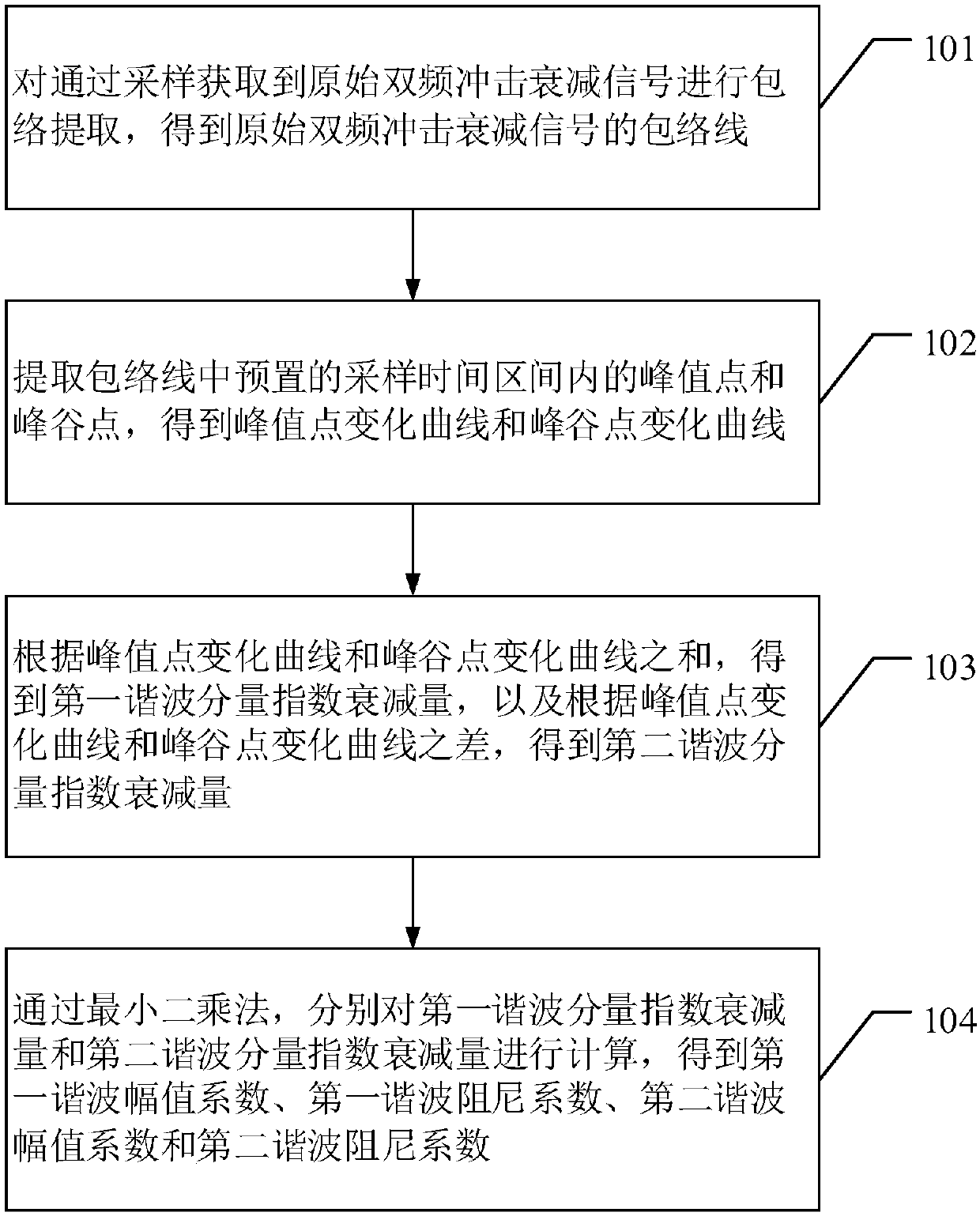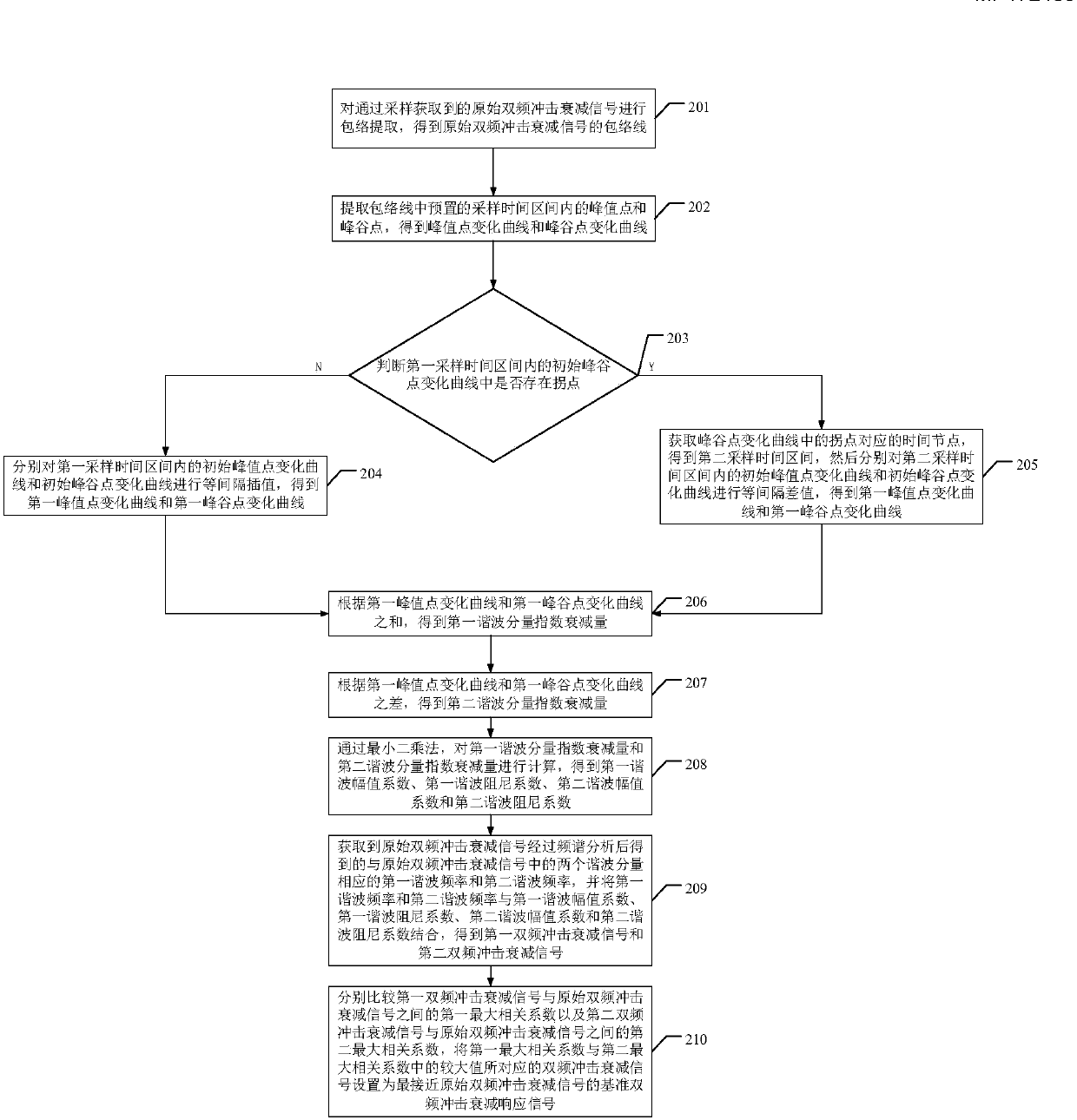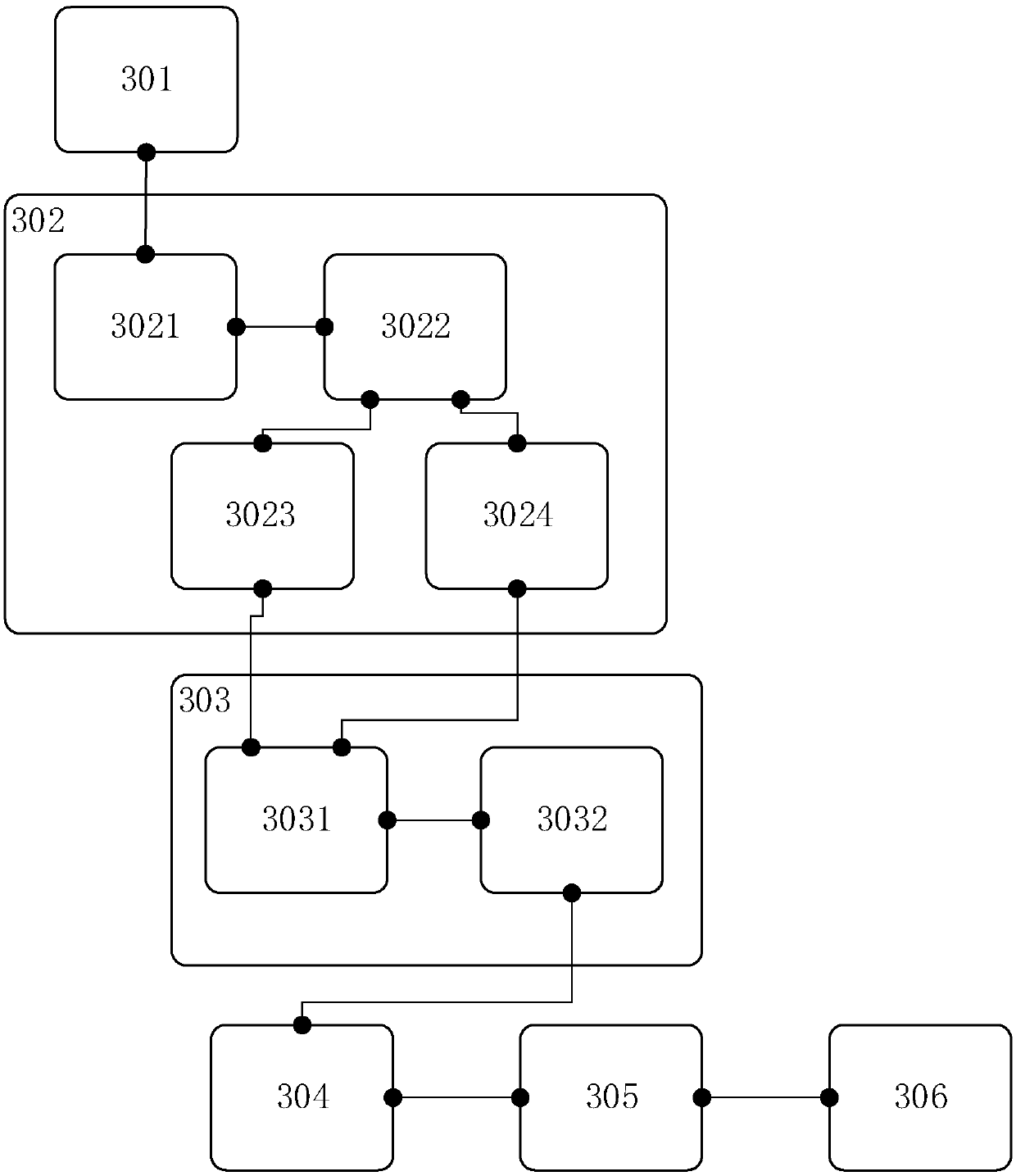Double-frequency harmonic wave attenuation signal damping feature identification method and device
A signal damping and feature recognition technology, which is applied in the field of signal processing, can solve the problems of unsatisfactory envelope curve processing effect and difficult identification of dual-frequency harmonic shock attenuation signal damping characteristic coefficients, etc.
- Summary
- Abstract
- Description
- Claims
- Application Information
AI Technical Summary
Problems solved by technology
Method used
Image
Examples
Embodiment Construction
[0070] The embodiment of the present invention provides a dual-frequency harmonic attenuation signal damping feature recognition method and device, which are used to solve the problem that the existing shock attenuation signal damping feature extraction technology can only process The processing effect of the envelope curve of the frequency harmonic signal is not ideal, which leads to the technical problem that the identification of the damping characteristic coefficient of the double-frequency harmonic shock attenuation signal is difficult.
[0071] In order to make the purpose, features and advantages of the present invention more obvious and understandable, the technical solutions in the embodiments of the present invention will be clearly and completely described below in conjunction with the accompanying drawings in the embodiments of the present invention. Obviously, the following The described embodiments are only some, not all, embodiments of the present invention. Bas...
PUM
 Login to View More
Login to View More Abstract
Description
Claims
Application Information
 Login to View More
Login to View More - R&D Engineer
- R&D Manager
- IP Professional
- Industry Leading Data Capabilities
- Powerful AI technology
- Patent DNA Extraction
Browse by: Latest US Patents, China's latest patents, Technical Efficacy Thesaurus, Application Domain, Technology Topic, Popular Technical Reports.
© 2024 PatSnap. All rights reserved.Legal|Privacy policy|Modern Slavery Act Transparency Statement|Sitemap|About US| Contact US: help@patsnap.com










